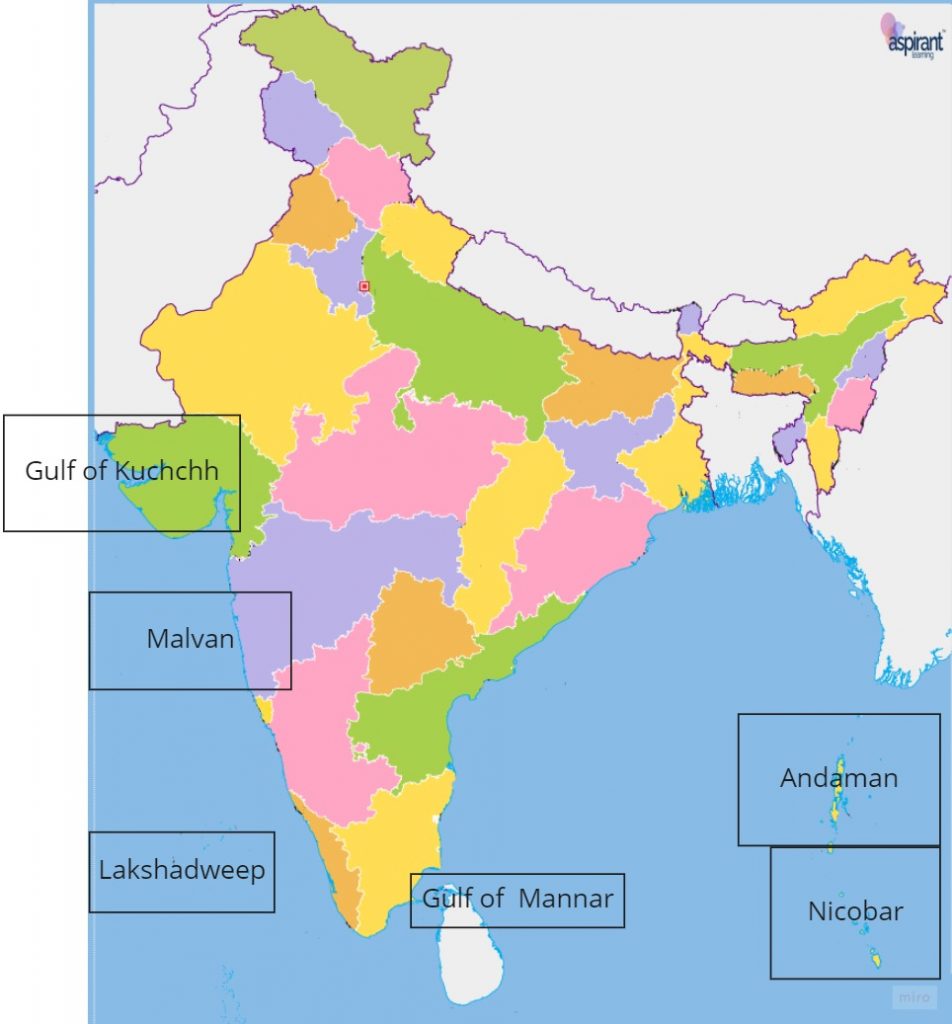News Highlights
Scientists have recorded four species of corals for the first time from Indian waters.
Focus Points
- These new species of azooxanthellate one were found from the waters off the Andaman and Nicobar Islands
Azooxanthellate Corals
- The azooxanthellate type are a group of corals that do not contain zooxanthellae and derive nourishment not from the sun but from capturing different forms of planktons
- They are deepsea representatives with the majority of species being reported from depths between 200 metres and 1,000 metres.
- They are also reported from shallow waters unlike zooxanthellate one that are restricted to shallow waters.
| Do You Know? – Zooxanthellae are unicellular, golden-brown algae (dinoflagellates) that live either in the water column as plankton or symbiotically inside the tissue of other organisms. It provides food to corals. |
Who Found New Corals?
- The Zoological Survey of India (ZSI) scientist behind these new findings.
Previous Discoveries
- Truncatoflabellum crassum (Milne Edwards and Haime, 1848), T. incrustatum (Cairns, 1989), T. aculeatum (Milne Edwards and Haime, 1848), and T. irregulare (Semper, 1872) under the family Flabellidae were previously found in Japan, the Philippines and Australian waters, while only T. crassum was reported with the range of Indo – West Pacific distribution.
Features of New Corals
- Azooxanthellate corals are a group of hard corals and the four new species recorded are not only solitary but have a highly compressed skeletal structure.
Significance of New Finding
- These new species enhance our knowledge about non reef building solitary corals.
- The new species enhance the national database of biological resources of India and also define the expansion of scope to explore these unexplored and non reef building coral
Corals
- They are nothing but calcareous rocks, formed from the skeletons of minute sea animals, called polyps.
- They are examples of symbiotic relationships.
- Symbiosis is a close ecological relationship between the individuals of two (or more) different species. Sometimes a symbiotic relationship benefits both species. For example, coral provide shelter to zooxanthellae and zooxanthellae provide food to them.
- Ideal condition for their growth
- Latitude – between 30°N and 30°S latitudes.
- Ideal Depth – 45 m to 55 m below sea surface
- Temperature – temperature of water should be around 20°C.
- Water Condition – Clear salt water is suitable for coral growth
- Nutrition – Adequate supply of oxygen and microscopic marine food, called plankton, is essential for growth and existence
Distribution of Corals in India

Content Source : The Hindu



